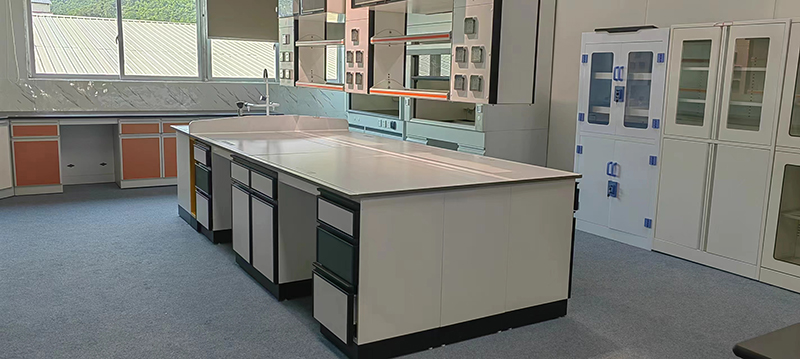Table of Contents
In the ever-evolving world of scientific research, the environment in which researchers work is crucial. Ergonomic lab furniture plays a significant role in ensuring comfort, safety, and efficiency, ultimately contributing to the well-being and productivity of researchers.
Drawing on my extensive experience designing ergonomic lab furniture for top brands, I’ll guide you through the essential aspects of creating an ergonomic lab environment.
What is Ergonomic Lab Furniture?
Ergonomic lab furniture is designed to support the physical well-being of researchers, minimizing discomfort and reducing the risk of work-related injuries.
This type of furniture is adjustable, customizable, and crafted to fit the user’s needs, promoting proper posture and comfort during long hours in the lab.
It includes items like height-adjustable workbenches, ergonomic chairs, and modular storage solutions that cater to various tasks and body types.
How A Lab Furniture Manufacturer Can Achieve Ergonomics?
To achieve true ergonomics, manufacturers must focus on user-centric design principles. This involves thorough research and development to understand the specific needs of lab workers.
Collaborating with ergonomic experts and incorporating feedback from actual users during the design process ensures that the final product meets the highest ergonomic standards.
Advanced manufacturing techniques and high-quality materials also play a vital role in producing durable and effective ergonomic furniture.
How To Design The Height?
Designing the height of lab furniture is crucial for ergonomics. Adjustable height workstations are essential as they accommodate various tasks and users.
These workstations should allow researchers to switch between sitting and standing positions effortlessly.
The ideal height can be determined by ensuring that when seated, the user’s feet are flat on the floor, and their elbows are at a 90-degree angle when working on the surface. For standing desks, the work surface should be at or slightly below elbow height.
What Kind of Material Should Be Chosen?
Choosing the right materials is essential for both durability and comfort. Ergonomic lab furniture should be made from materials that are easy to clean, resistant to chemicals, and capable of withstanding the rigors of a lab environment. Common materials include:
High-pressure laminate (HPL): Durable, resistant to scratches and chemicals.
Phenolic resin: Known for its chemical resistance and durability.
Stainless steel: Corrosion-resistant and easy to sanitize.
Ergonomic padding and upholstery: Used in seating to provide comfort and support.
How To Make The Parts That Touch The Body Meet Ergonomic Requirements?
To ensure that the parts of the furniture that come into direct contact with the body meet ergonomic requirements, manufacturers should:
Use contoured shapes: Chairs with contoured backrests and seat pans support the natural curves of the spine.
Incorporate padding: Use high-density foam or gel padding in seats and armrests to reduce pressure points and improve comfort.
Provide adjustability: Features like adjustable armrests, lumbar support, and seat height allow users to customize the fit to their body.
Ensure smooth edges: Rounded edges on desks and workbenches prevent discomfort and potential injury.
Does It Need To Invest Huge Money In Ergonomic Lab Furniture?
While producing ergonomic lab furniture does involve an investment, it doesn’t necessarily require a huge budget.
The long-term benefits, such as increased productivity, reduced absenteeism due to injury, and enhanced researcher satisfaction, often outweigh the initial costs.
Additionally, there are varying levels of ergonomic solutions available, allowing labs to choose products that fit their budget while still improving ergonomics.
Investing in high-quality ergonomic furniture can lead to significant cost savings over time by reducing the need for frequent replacements and repairs.
Conclusion
Ergonomic lab furniture is a critical investment for any research facility aiming to enhance the well-being and productivity of its researchers.
By focusing on adjustable heights, selecting durable materials, and ensuring body-contact parts meet ergonomic standards, manufacturers can create furniture that supports the health and efficiency of lab workers.
While the initial investment might seem significant, the long-term benefits make it a wise choice for any forward-thinking lab.
For more information and to explore ergonomic lab furniture options, feel free to reach out to us. We specialize in designing and manufacturing top-quality ergonomic lab furniture tailored to meet the unique needs of your research facility.




